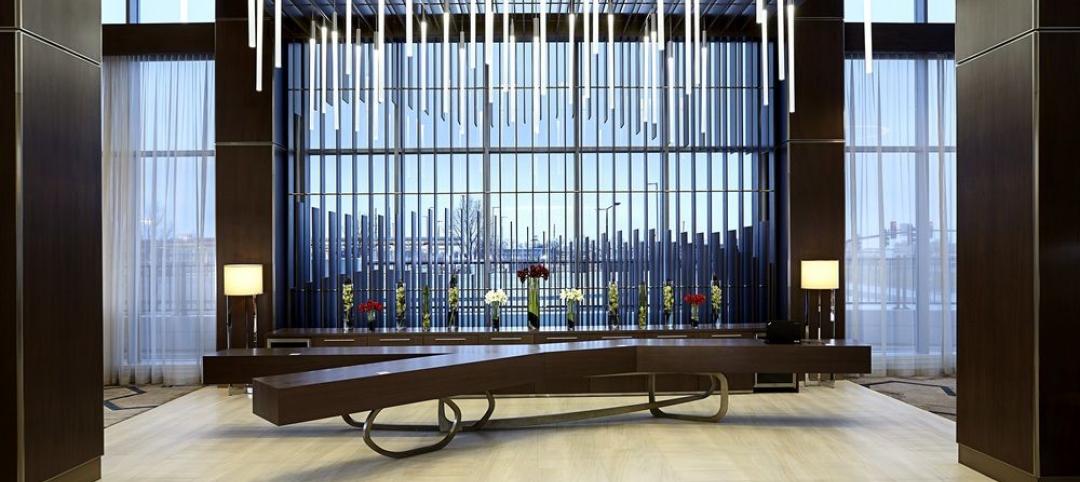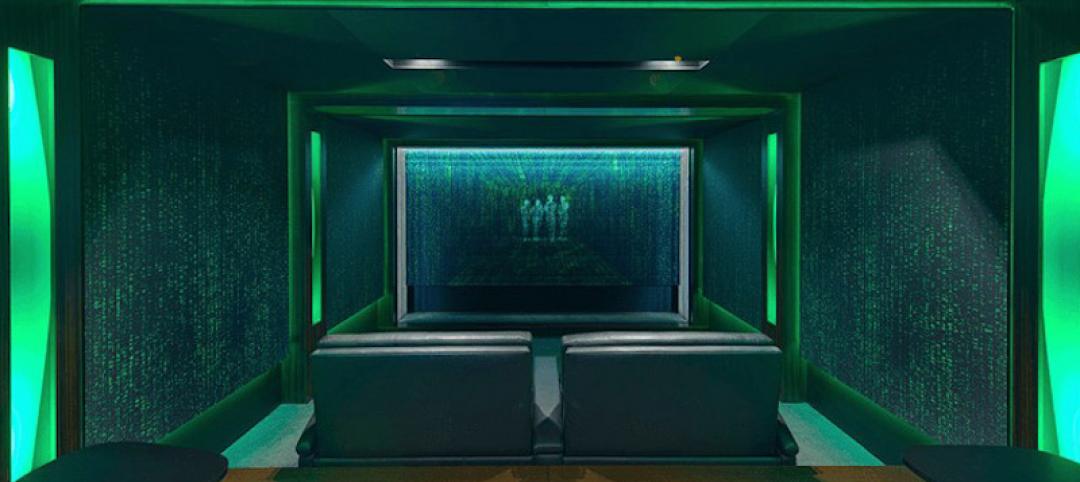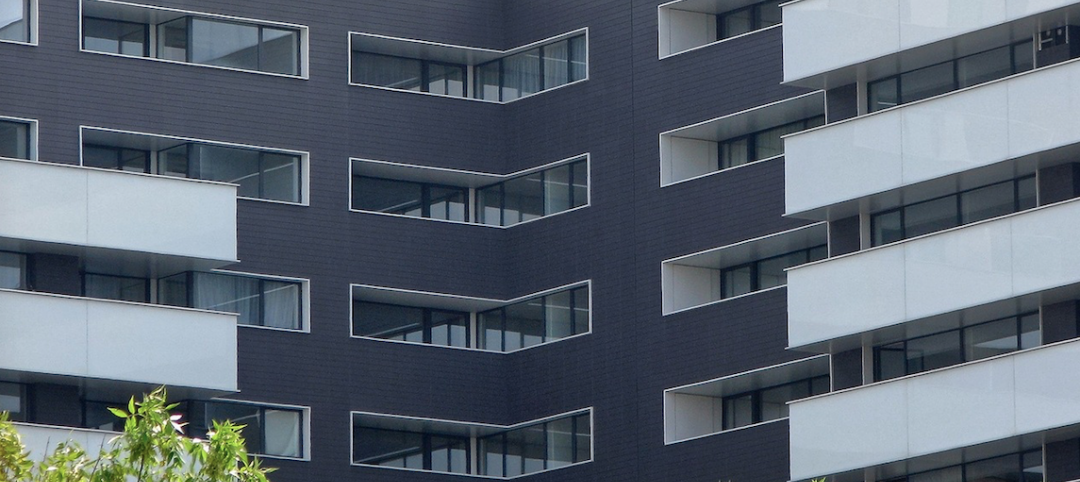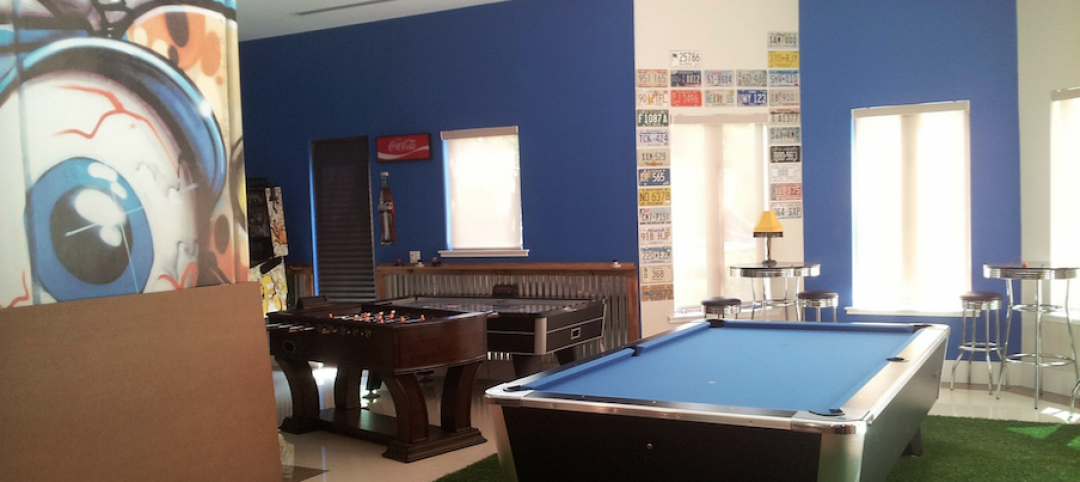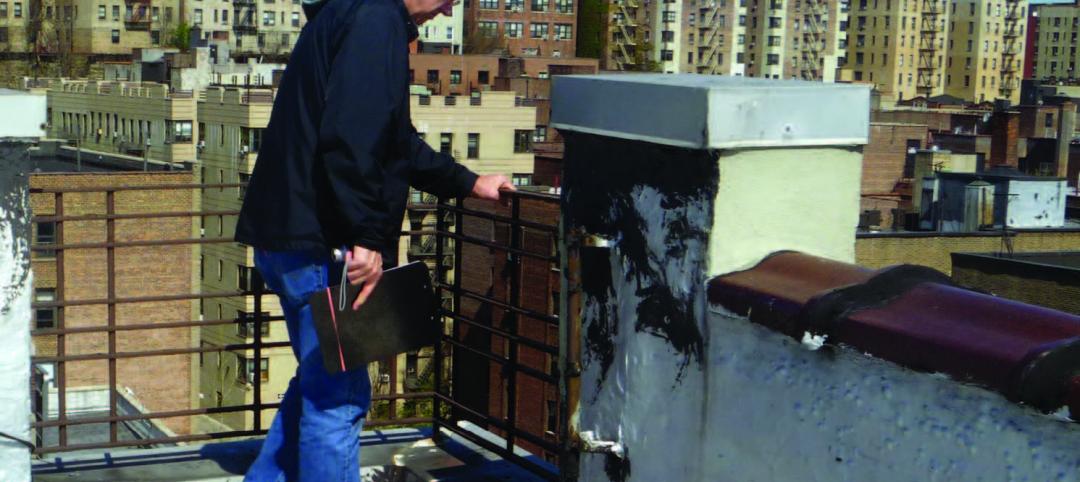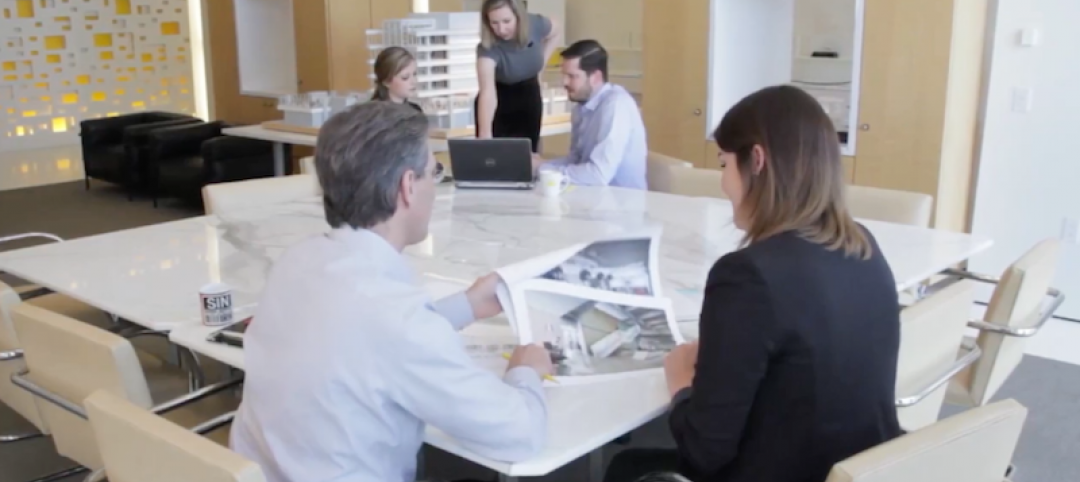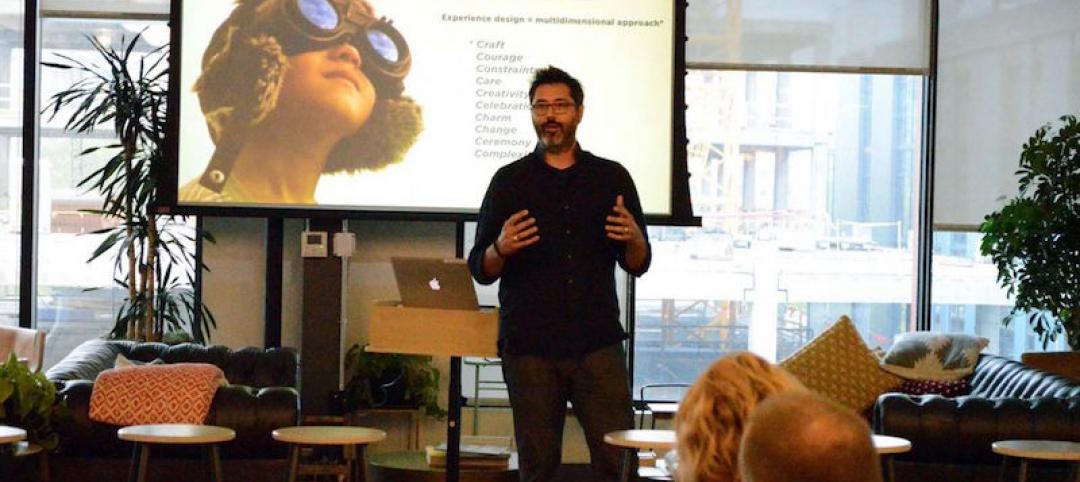The results of the 2011 Emporis Skyscraper Award are now in: 8 Spruce Street in New York City is the winner of the renowned architecture prize for new skyscrapers. Every year, Emporis' international jury (www.emporis.com) rewards ten skyscrapers completed in the previous calendar year. The award is being given for the 12th time.
The winners were chosen from over 220 skyscrapers completed in 2011. 8 Spruce Street, the first skyscraper by the architect Frank Gehry, and also known as The Beekman or New York by Gehry, won over the jury with its magnificent undulating stainless steel facade.
The sculptured form of Skidmore, Owings & Merrill's Al Hamra Tower earned it second place in the ranking. Despite its great height, the skyscraper fits harmoniously into Kuwait City's urban landscape. The tower is engineered to take account of climate conditions: the south facade, with limestone elements cladding a concrete wall, protects the building from the searing desert sun and impressed the jury from both architectural and functional points of view.
DBI Design's Etihad Towers were voted into third place, the jury praising the complex as a particularly harmonious ensemble of buildings. Critical to the decision were the soft, curving contours of the towers: these suggest the shape of sails and are intended to evoke Abu Dhabi's history as a port. The jury of experts also singled out the exceptional facade of silver and blue glass.
8 Spruce Street is now the third New York tower to win the Emporis Skyscraper Award. The very first award (2000) went to Sofitel New York Hotel, while Hearst Tower won the coveted architecture prize for 2006. That makes New York City, the world capital of high-rise architecture, the city to which the Emporis Skyscraper Award has most often been awarded.
Click here to view photos of the winning projects. +
Related Stories
Lighting | Aug 2, 2017
Dynamic white lighting mimics daylighting
By varying an LED luminaire’s color temperature, it is possible to mimic daylighting, to some extent, and the natural circadian rhythms that accompany it, writes DLR Group’s Sean Avery.
Healthcare Facilities | Aug 2, 2017
8 healthcare design lessons from shadowing a nurse
From the surprising number of “hunting and gathering” trips to the need for quiet spaces for phone calls, interior designer Carolyn Fleetwood Blake shares her takeaways from a day shadowing a nurse.
Sponsored | Architects | Aug 2, 2017
Are visual ergonomics the new key to project delivery?
An Australian Home Theater Company is out to prove that the easier you can see it, the easier you can sell it.
Multifamily Housing | Jul 27, 2017
Apartment market index: Business conditions soften, but still solid
Despite some softness at the high end of the apartment market, demand for apartments will continue to be substantial for years to come, according to the National Multifamily Housing Council.
Multifamily Housing | Jul 27, 2017
Game rooms and game simulators popular amenities in multifamily developments
The number of developments providing space for physical therapy was somewhat surprising, according to a new survey.
Building Enclosure Systems | Jul 26, 2017
Balcony and roof railings and the code: Maintain, repair, or replace? [AIA course]
Lacking familiarity with current requirements, some owners or managers complete a roof or balcony rehabilitation, only to learn after the fact that they need to tear noncompliant railings out of their new roof or terrace and install new ones.
Office Buildings | Jul 26, 2017
Meeting space leads to innovation
PDR Principal Larry Lander explains how to design for workplaces where four generations are working together.
Architects | Jul 25, 2017
AIA 2030 Commitment expands beyond 400 architecture firms
The 2016 Progress Report is now available.
Multifamily Housing | Jul 19, 2017
Student housing trends: The transformation of co-living in college
The Student Hotel is representative of a new model for delivering housing solutions for students globally.
Designers | Jul 19, 2017
5 laws every designer can live by
What is design? Who are designers? And are there any common laws or rules than can unite the many types of design that exist?


